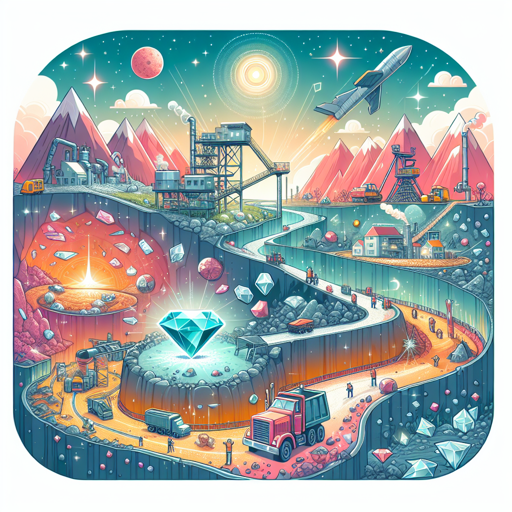Unearthing the Diamond: A Journey From Mine to Market
Explore the intricacies of diamond mining and its path from raw gemstone to a dazzling piece of jewelry

Introduction
Diamonds, the gemstones that symbolize love and wealth, are not born in the glamorous setting we usually see them in. They come from the earth, undergoing a remarkable journey from the dark depths of mines to the bright lights of the market. In this article, we’ll delve deep into the world of diamond mining, traversing this fascinating path from mine to market.
The Birth of a Diamond
Diamonds are born deep within the earth’s mantle, under extreme heat and pressure. These conditions transform carbon atoms into a crystalline structure that we know as a diamond. Volcanic eruptions then propel these diamonds towards the earth’s surface, encapsulating them in kimberlite, a type of igneous rock.
The Hunt Begins
Diamond mining begins with the hunt for kimberlite. Geologists use seismic surveys to locate these elusive rocks. Once they find a promising location, mining operations can begin. There are two primary methods of diamond mining: open pit and underground mining. The choice of method depends on the geology of the kimberlite deposit.
| Mining Method | Description |
|---|---|
| Open Pit | This method involves removing surface vegetation and layers of bedrock to expose the kimberlite. It’s used when the deposit is near the earth’s surface. |
| Underground | This method is used when the deposit is deep within the earth. Miners dig a vertical shaft down to the kimberlite, then excavate a network of tunnels to reach the diamonds. |
From Rough to Refined
Once the diamonds are extracted, they still have a long way to go. They are rough and unpolished, barely recognizable as the gemstones we know and love. They are sorted by size, weight, and quality. The highest quality diamonds go to gem cutters, who cut and polish them into the finished product. The rest go to industrial uses, such as cutting, grinding, and drilling.
“Diamonds are nothing more than chunks of coal that stuck to their jobs.” - Malcolm Forbes
The Market Awaits
The final step in a diamond’s journey is the market. Diamond wholesalers sell them to jewelry manufacturers, who set them into rings, necklaces, and other pieces of jewelry. These pieces are then sold to retailers, who sell them to the public.
The diamond market is a global one, with major trading centers in Antwerp, Belgium, and Mumbai, India. The journey of a diamond, from mine to market, is a complex one, involving many steps and many different people.
Conclusion
Unearthing a diamond is a complex process that requires a blend of geology, engineering, craftsmanship, and commerce. It’s a testament to human ingenuity and the incredible beauty that nature can create under the right conditions. So next time you see a diamond sparkling in the light, take a moment to appreciate the remarkable journey it has taken from the heart of the earth to reach you.
For more insights into the world of diamond mining, visit the Gemological Institute of America for a wealth of information.